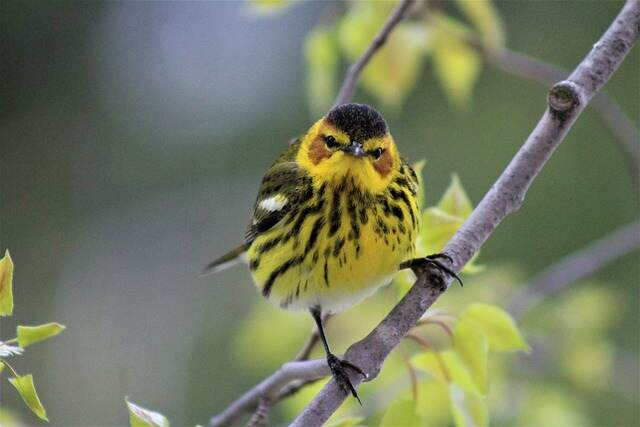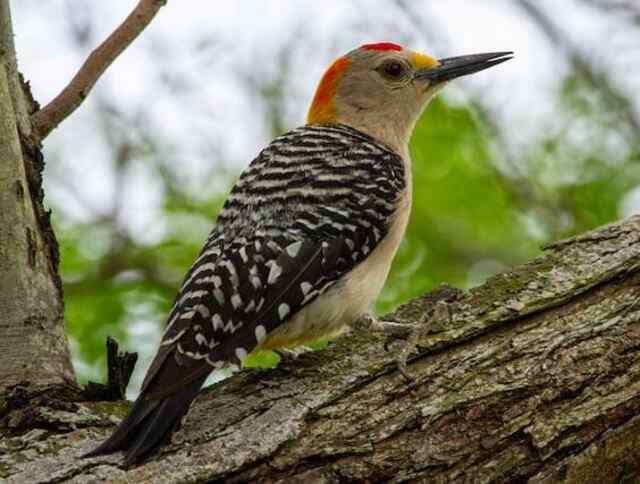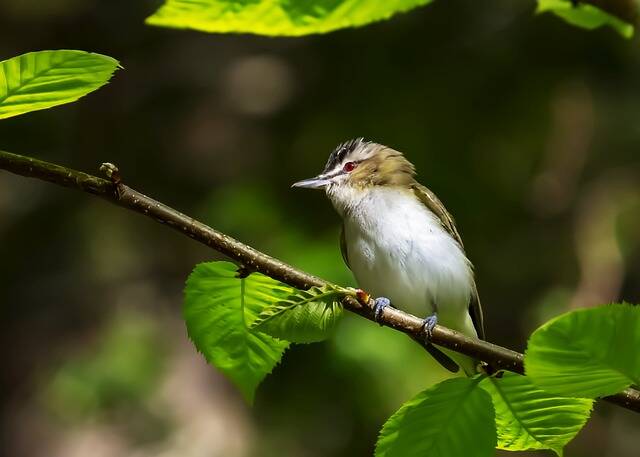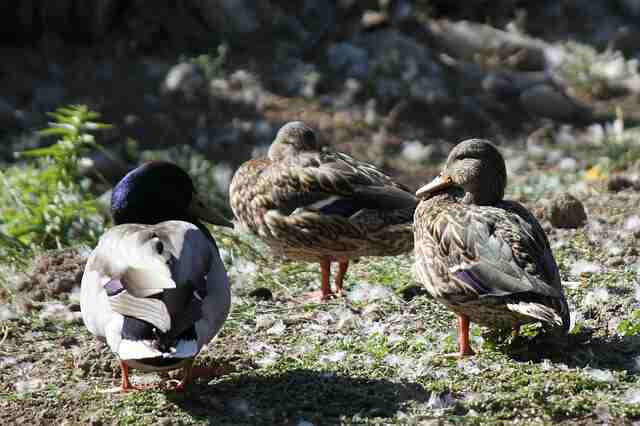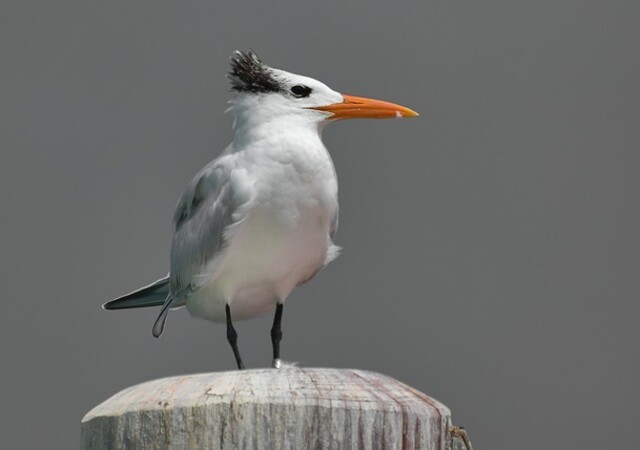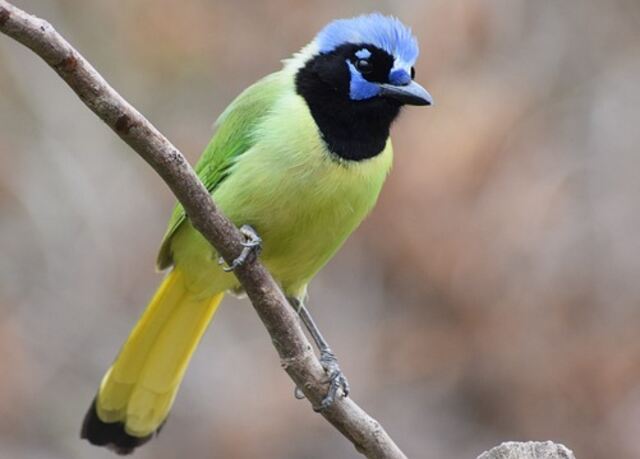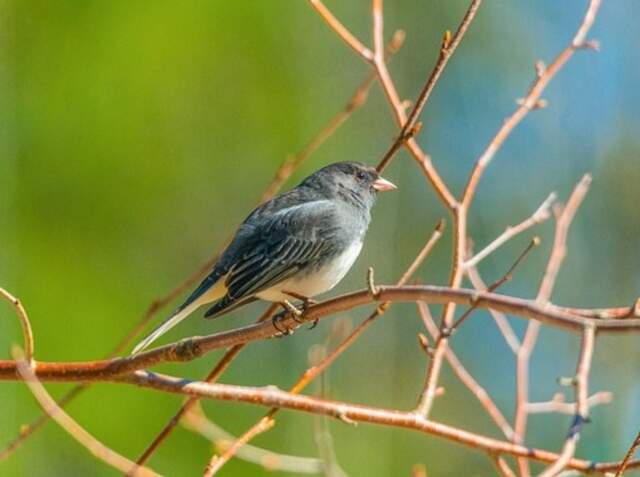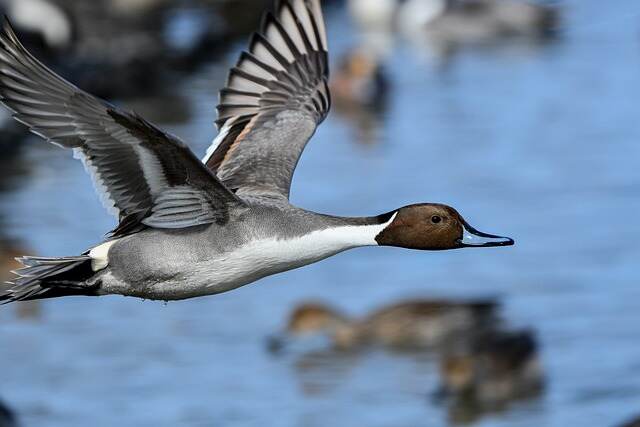The United States boasts some of the finest birdwatching destinations, with habitats ranging from coastal marshes to dense forests, each attracting a stunning variety of bird species. Whether you’re searching for wading birds along the shoreline or trying to spot a shy warbler deep in the woods, these best birding spots in the United States offer experiences you won’t forget 🙂. Here’s a guide to the top locations every birder should explore.
- The U.S. has diverse habitats attracting countless bird species.
- Cape May, NJ – great for warblers, orioles, thrushes, shorebirds.
- Rio Grande Valley & High Island, TX – tropical and migratory species.
- Pacific Northwest & West – shorebirds, waterfowl, forest species.
- Gulf Coast & Southeast – wetlands, forests, marshes with many birds.
- Great Lakes – warblers, eagles, waterfowl across forests & lakes.
- Southwest – deserts, canyons, and tropical species like roadrunners.
- Alaska – tundras, coastlines, forests with hundreds of species.
- Spring & fall migrations are best for maximum bird diversity.
- Bring binoculars, field guides, and plan visits by region & season.
Table of Contents
- 1 Best Birding Spots in the United States
- 2 Frequently Asked Questions (FAQs)
- 2.1 What are the best birding spots in the United States?
- 2.2 What types of birds can be observed at these birding spots?
- 2.3 What equipment do I need for birding?
- 2.4 What is the best time of year to go birding in the United States?
- 2.5 Are there guided birding tours available in the United States?
- 2.6 Is birding safe?
- 3 Author
Best Birding Spots in the United States
1. Cape May, New Jersey
Cape May is a premier birding destination on the East Coast of the United States, known for its diverse birdlife and stunning coastal scenery. During the spring and fall migrations, birders from around the world flock to Cape May to observe hundreds of bird species, including warblers, orioles, thrushes, and shorebirds.
Top Birding Spots in Cape May:
- Cape May Point State Park: This historic park is a must-visit for birders, offering breathtaking views of the Atlantic Ocean and a prime location for observing migratory birds.
- Higbee Beach Wildlife Management Area: Higbee Beach is a popular spot for shorebird watching, with a wide range of habitats, including saltmarshes, sand dunes, and tidal pools.
- The Nature Conservancy’s South Cape May Meadows: This nature reserve is home to a diverse range of bird species, including herons, egrets, and wading birds.
- The Cape May Bird Observatory: This birdwatching center offers guided walks, birding classes, and a wealth of resources for birders of all levels.
2. Rio Grande Valley, Texas
The Rio Grande Valley in Texas is a birder’s paradise, offering a unique blend of habitats and a rich diversity of bird species. With over 500 documented bird species, the Rio Grande Valley is one of the best places in the country to see tropical and subtropical birds.
Top Birding Spots in Rio Grande Valley:
- Bentsen-Rio Grande Valley State Park: This 797-acre park is a popular birding destination, known for its lush subtropical habitats and a wide range of bird species, including the green jay, the chachalaca, and the golden-fronted woodpecker.
- World Birding Center: The World Birding Center is a network of nine birdwatching sites throughout the Rio Grande Valley, offering birders a chance to observe a wide range of bird species and habitats.
- Estero Llano Grande State Park: This 230-acre plus park is a wetland’s paradise, offering birders a chance to observe waterbirds, wading birds, and songbirds in their natural habitats.
- Laguna Atascosa National Wildlife Refuge: This 98,000-acre refuge is one of the most biodiverse birding spots in Texas, with habitats ranging from coastal marshes to thorn forests.
3. High Island, Texas
High Island is a small coastal town located in the Gulf of Mexico, known for its spectacular birding opportunities and stunning landscapes. Each spring, thousands of songbirds and warblers stop at High Island during their migration to breed and refuel.
Top Birding Spots in High Island:
- Boy Scout Woods: This scenic nature trail is a popular birding spot for observing warblers, vireos, and other migratory songbirds.
- Smith Oaks Sanctuary: This 177-acre bird sanctuary is home to a diverse range of bird species, including resident species like the green kingfisher and migratory species like the Swainson’s warbler.
- Anahuac National Wildlife Refuge: This 37,000-acre refuge is a must-visit for birders, offering a range of habitats, including marshes, forests, and prairies, and a chance to observe over 300 bird species.
- Bolivar Flats Shorebird Sanctuary: This extensive beach and mudflat habitat is a prime location for observing shorebirds, including sandpipers, plovers, and terns.
4. Pacific Northwest
The Pacific Northwest, stretching from northern California to southern Alaska, is a birding hot spot, offering a range of habitats, including temperate rainforests, coastal estuaries, and high-elevation forests.
Top Birding Spots in Pacific Northwest:
- Grays Harbor National Wildlife Refuge: This 9,300-acre refuge is a popular birding destination, known for its rich birdlife and stunning scenery.
- Dungeness National Wildlife Refuge: This 772.52-acre refuge is a prime location for observing shorebirds, waterfowl, and songbirds, and is one of the best places in the country to observe the Olympic marmot.
- Willapa National Wildlife Refuge: This 17,000-acre refuge is a birding paradise, offering a range of habitats, including tidal marshes, coastal forests, and sand dunes, and a chance to observe over 250 bird species.
- Conboy Lake National Wildlife Refuge: This 7,071.70-acre refuge is a must-visit for birders, offering a chance to observe a wide range of bird species, including waterfowl, songbirds, and raptors.
5. Gulf Coast
The Gulf Coast, stretching from Florida to Texas, is a birding haven, offering a range of habitats, including wetlands, forests, and coastal marshes, and a rich diversity of bird species.
Top Birding Spots in Gulf Coast:
- St. Mark’s National Wildlife Refuge: This 68,000-acre refuge is a popular birding destination, offering a range of habitats, including tidal marshes, pine forests, and prairies, and a chance to observe over 300 bird species.
- Bon Secour National Wildlife Refuge: This 7,157-acre refuge is a prime location for observing shorebirds, waterfowl, and songbirds, and is one of the best places in the country to observe the endangered piping plover.
- Grand Isle State Park: This beachfront state park is a popular birding destination, known for its stunning scenery and a wide range of bird species, including the brown pelican, the royal tern, and the gull-billed tern.
- J.N. “Ding” Darling National Wildlife Refuge: This 6,400-acre refuge is a birding hot spot, offering a range of habitats, including mangrove forests, tidal marshes, and beaches, and a chance to observe over 250 bird species.
6. Great Lakes Region
The Great Lakes Region, including states like Michigan, Ohio, and Wisconsin, is a birding gem, offering a range of habitats, including forests, wetlands, and lakeshores, and a rich diversity of bird species.
Top Birding Spots in Great Lakes Region:
- Point Pelee National Park: This 15-square-mile park is a popular birding destination, offering a range of habitats, including marshes, beaches, and forests, and a chance to observe over 390 bird species, including warblers, vireos, and thrushes.
- Seney National Wildlife Refuge: This 95,238-acre refuge is a birding paradise, offering a range of habitats, including wetlands, forests, and grasslands, and a chance to observe over 200 bird species, including waterfowl, sandpipers, and woodpeckers.
- Sleeping Bear Dunes National Lakeshore: This 32,557-acre park is a must-visit for birders, offering a range of habitats, including forests, dunes, and lakeshores, and a chance to observe over 300 bird species, including eagles, ospreys, and peregrine falcons.
- Huron-Manistee National Forests: This 978,906-acre forest and including 5,786 acres of wetlands is a birding hot spot, offering a range of habitats, including wetlands, forests, and lakeshores, and a chance to observe over 400 bird species, including warblers, thrushes, and orioles.
7. Southwest
The Southwest, including states like Arizona, New Mexico, and Texas is a birding paradise, offering a range of habitats, including deserts, canyons, and forests, and a rich diversity of bird species.
Top Birding Spots in Southwest:
- Bosque del Apache National Wildlife Refuge: This 57,331-acre refuge is a popular birding destination, offering a range of habitats, including wetlands, prairies, and forests, and a chance to observe over 340 bird species, including waterfowl, sandpipers, and hawks.
- Big Bend National Park: This 801,163-acre park is a must-visit for birders, offering a range of habitats, including deserts, canyons, and forests, and a chance to observe over 450 bird species, including warblers, vireos, and orioles.
- Rio Grande Valley: This 230-mile-long valley is a prime location for observing a wide range of bird species, including waterfowl, shorebirds, and songbirds, and is one of the best places in the country to observe the endangered ocelot.
- South Texas Brush Country: This vast region of scrublands and thorn forests is a birding hot spot, offering a chance to observe over 450 bird species, including roadrunners, jays, and doves.
8. Southeast
The Southeast, including states like Florida, Georgia, and South Carolina, is a birding haven, offering a range of habitats, including wetlands, forests, and coastlines, and a rich diversity of bird species.
Top Birding Spots in Southeast:
- Okefenokee National Wildlife Refuge: This 402,000-acre refuge is a popular birding destination, offering a range of habitats, including swamps, forests, and prairies, and a chance to observe over 234 bird species, including waterfowl, wading birds, and songbirds.
- Jekyll Island: This 5,500-acre island is a must-visit for birders, offering a range of habitats, including marshes, forests, and beaches, and a chance to observe over 300 bird species, including eagles, ospreys, and pelicans.
- Merritt Island National Wildlife Refuge: This 140,000-acre refuge is a birding hot spot, offering a range of habitats, including marshes, forests, and beaches, and a chance to observe over 359 bird species, including waterfowl, shorebirds, and songbirds.
- Cape Romain National Wildlife Refuge: This 66,287-acre refuge is a prime birding location, offering a range of habitats, including marshes, forests, and beaches, and a chance to observe over 293 bird species, including waterfowl, shorebirds, and songbirds.
- St. Mark’s National Wildlife Refuge: This 68,000-acre refuge is a popular birding destination, offering a range of habitats, including marshes, forests, and beaches, and a chance to observe over 271 bird species, including waterfowl, shorebirds, and songbirds.
9. West
The West, including states like California, Nevada, and Utah, is a birding paradise, offering a range of habitats, including deserts, mountains, and forests, and a rich diversity of bird species.
Top Birding Spots in West:
- Mono Lake: This 65-square-mile lake is a must-visit for birders, offering a chance to observe over 300 bird species, including waterfowl, shorebirds, and songbirds.
- Modoc National Wildlife Refuge: This 7,000-acre refuge is a popular birding destination, offering a range of habitats, including forests, wetlands, and prairies, and a chance to observe over 250 bird species, including waterfowl, shorebirds, and songbirds.
- Mono Basin National Forest Scenic Area: This scenic area is a birding hot spot, offering a range of habitats, including forests, wetlands, and prairies, and a chance to observe over 325 bird species, including waterfowl, shorebirds, and songbirds.
- Malheur National Wildlife Refuge: This 187,000-acre refuge is a prime birding location, offering a range of habitats, including forests, wetlands, and prairies, and a chance to observe over 340 bird species, including waterfowl, shorebirds, and songbirds.
10. Alaska
Alaska is a birding paradise, offering a range of habitats, including tundras, forests, and coastlines, and a rich diversity of bird species.
Top Birding Spots in Alaska:
- Kenai National Wildlife Refuge: This 1.92 million-acre refuge is a popular birding destination, offering a range of habitats, including forests, wetlands, and tundras, and a chance to observe over 664 bird species, including waterfowl, shorebirds, and songbirds.
- Arctic National Wildlife Refuge: This 19,286,722 million-acre refuge is a must-visit for birders, offering a range of habitats, including tundras, forests, and coastlines, and a chance to observe over 200 bird species, including waterfowl, shorebirds, and songbirds.
- Kodiak National Wildlife Refuge: This 2 million-acre refuge is a birding hot spot, offering a range of habitats, including forests, wetlands, and coastlines, and a chance to observe over 250 bird species, including waterfowl, shorebirds, and songbirds.
- Aleutian Islands: This chain of over 300 islands is a prime birding location, offering a range of habitats, including tundras, forests, and coastlines, and a chance to observe over 376 bird species, including waterfowl, shorebirds, and songbirds.
Conclusion
In conclusion, the United States is a birding paradise, offering a range of habitats and a rich diversity of bird species. Whether you’re a seasoned birder or just starting out, there’s no shortage of top birding spots in the United States.
From the East Coast to the West Coast, and from the Gulf of Mexico to Alaska, there’s a birding destination that’s perfect for you. So why wait? Pack your binoculars and birding guide, and head out to explore the top birding spots in the United States today!
With so many amazing locations to choose from, you’re sure to have a memorable and enjoyable birding experience. Whether you’re interested in observing waterfowl, shorebirds, songbirds, or any other species, you’re sure to find it in the United States.
So, take some time to plan your trip, and experience the thrill of birding in one of the most beautiful and diverse countries in the world. And don’t forget to take advantage of the many birding resources available in the United States.
So, get out there, and start exploring the top birding spots in the United States today!
Frequently Asked Questions (FAQs)
What are the best birding spots in the United States?
The best birding spots in the United States include Cape May, J.N. “Ding” Darling National Wildlife Refuge, High Island, Bosque del Apache National Wildlife Refuge, Grays Harbor National Wildlife Refuge, Quivira National Wildlife Refuge, St. Mark’s National Wildlife Refuge, Mono Lake, Mono Basin National Forest Scenic Area, Kenai National Wildlife Refuge, Arctic National Wildlife Refuge, Kodiak National Wildlife Refuge, and the Aleutian Islands.
What types of birds can be observed at these birding spots?
At these locations, visitors can observe birds in their natural habitats and gain insight into the habits and behaviors of various species. Birdwatchers will be delighted to find many different types of birds including ducks, geese, swans, seagulls, sandpipers, kingfishers, owls, hawks and eagles.
Additionally, they may spot smaller varieties such as hummingbirds, warblers, finches, juncos, and chickadees that make these areas their home.
What equipment do I need for birding?
Birding is an exciting hobby that can be enjoyed by people of all ages. Whether you’re a beginner or a seasoned enthusiast, having the right equipment for bird watching will help you make the most of your experience.
The basic items you need to get started with birding are binoculars and a field guide. Binoculars provide magnification and allow you to observe birds from a distance, while field guides give detailed information about both common and rare species.
A tripod can also be useful for steady viewing and taking pictures. For longer excursions, it’s also important to bring along plenty of water, sunscreen, insect repellent, snacks, and comfortable clothes suitable for the weather conditions in your area.
What is the best time of year to go birding in the United States?
The best time of year to go birding in the United States depends on the region you plan to visit. Generally speaking, spring and fall are considered the best times for birding in most areas, as this is when birds are migrating and there is a greater variety of species.
In the northern regions of the country, late April through mid-May is ideal for viewing migrating songbirds like warblers, vireos, thrushes, flycatchers, and orioles. In addition to these migrants, many resident species can be seen during this time as well.
In the southern regions of the US, mid-September through November is typically the best time for birding. Migrants from Canada and points north will pass through this area during their southward journey. Many resident species can also be seen at this time of year.
Are there guided birding tours available in the United States?
Yes, there are various guided birdwatching tours available in the United States, offered my many companies specializing in nature, eco-tourism, and guided birdwatching. These tours make for a superb way to learn about birds and their habitats and observe wildlife while having a knowledgeable guide.
Is birding safe?
Birding is generally a safe activity, however there are some precautions that should be taken to ensure the safety of both birders and the birds. One important safety measure is to research the area where you will be birding beforehand. Knowing what types of birds frequent the area and what kind of terrain you’ll be navigating can help you make sure you’re prepared for any unexpected encounters.
Additionally, it is important to wear appropriate clothing and footwear for the conditions. This could include long pants and sleeves if there are thorny plants, or insect repellent if mosquitoes are known to be present in the area.
Finally, it is essential to remain respectful of the birds and their environment while birding. Avoid disturbing nesting sites or chasing after birds, as this can cause them unnecessary stress and potentially harm them.
Birding should be an enjoyable experience that allows birders to appreciate nature while also keeping themselves safe.
Related Post: 30 Best Birding Spots in Canada


